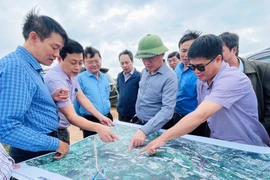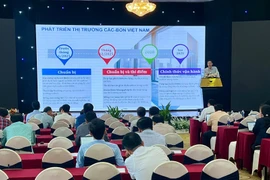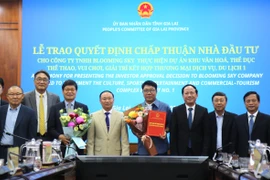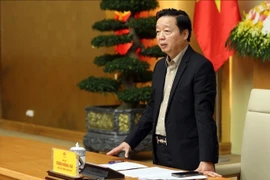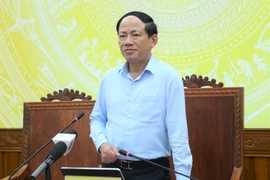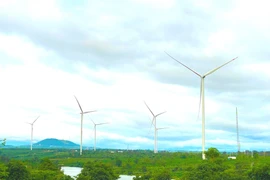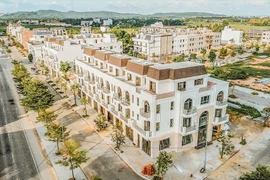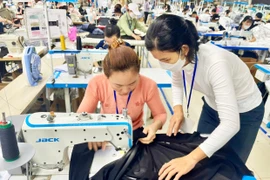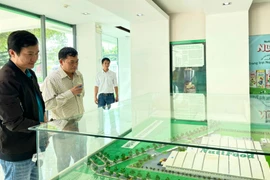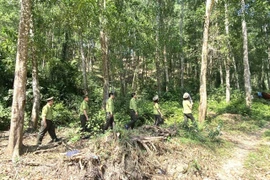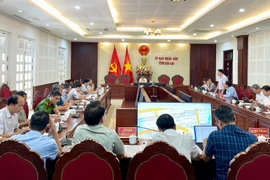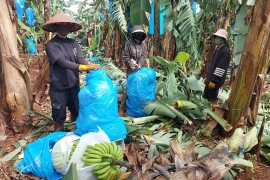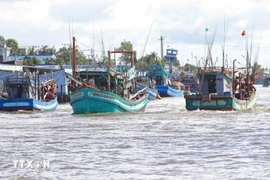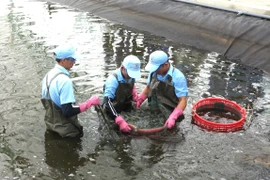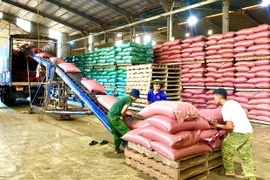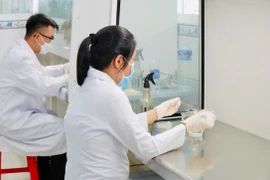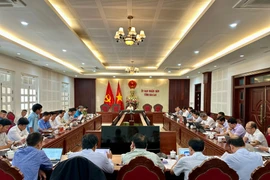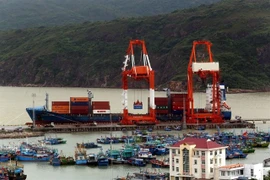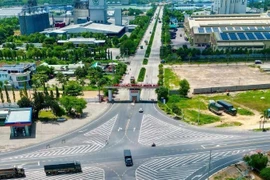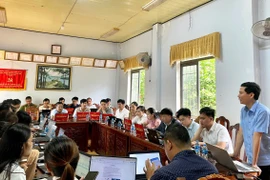Co-hosted by the Department of Science and Technology, the Department of Industry and Trade, and the International Center for Interdisciplinary Science and Education (ICISE), the workshop emphasized the province’s unique opportunity to transform its economy through renewable energy.
Ms. Võ Cao Thị Mộng Hoài, Deputy Director of the Department of Science and Technology, said the net zero goal is “not only an environmental commitment but also a strategic opportunity for Gia Lai to make a breakthrough in its next development phase.” She added that the province’s natural advantages position it to become a regional leader in clean energy.
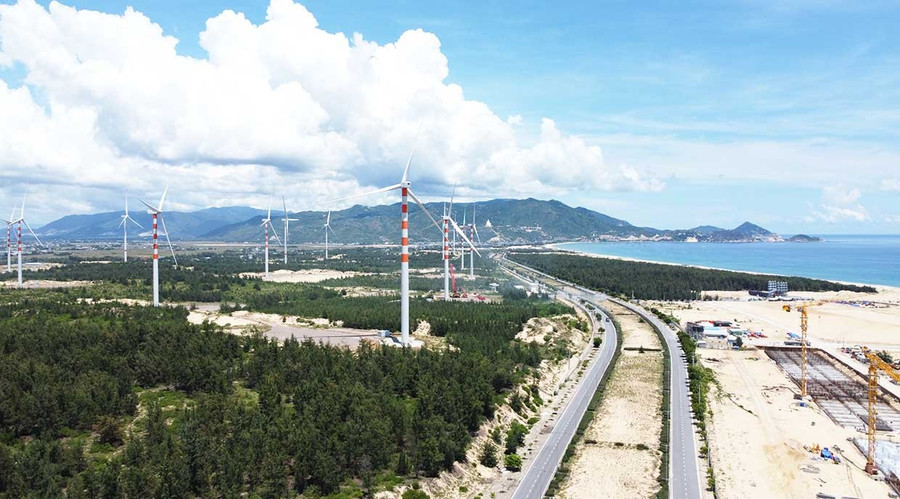
In the photo: Wind power development at Nhơn Hội Economic Zone (Quy Nhơn Đông Ward). Photo: T.Lợi
Unlike many other provinces reliant on fossil fuels, Gia Lai has no coal-fired or oil and gas power plants. Its favorable climate, with abundant wind, solar radiation, and water resources, allows it to develop renewable energy sources such as wind, solar, hydropower, and biomass without a complex transition phase.
“Net Zero is no longer a choice, but an essential requirement to enhance competitiveness and affirm Gia Lai’s pioneering role in the region’s green development strategy,” Ms. Hoài said.
From an industrial perspective, Mr. Trần Thúc Kham, Deputy Director of the Department of Industry and Trade, identified three key sectors for emission reduction: electricity, industry, and transportation.
The province’s industries, mainly agricultural processing, wood, cassava starch, pellets, bricks, sugar, and garments, consume large amounts of energy. Integrating renewable sources into these sectors, he noted, will be critical to achieving the 2050 target.
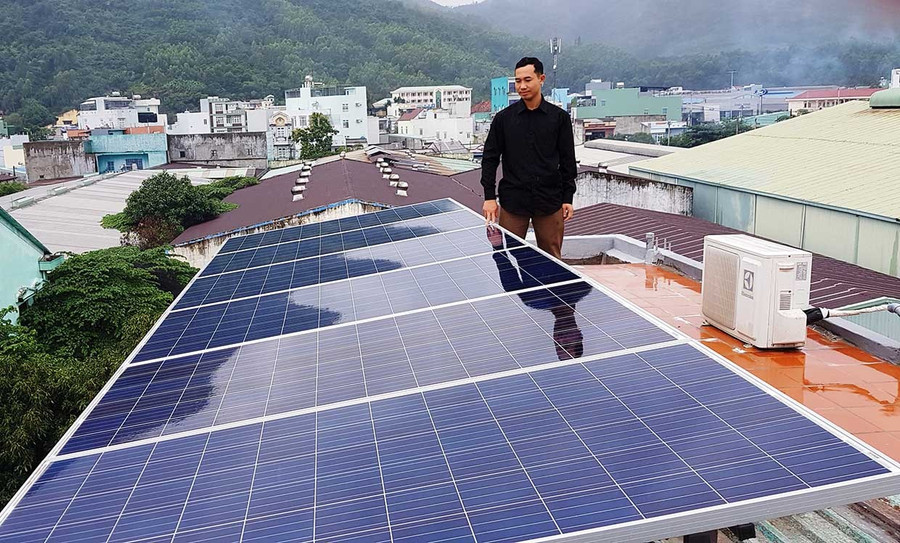
Currently, a series of renewable energy projects, including wind, solar, hydropower, biomass, and rooftop solar installations, are being implemented across Gia Lai. These developments are gradually reshaping the province’s position on Vietnam’s national energy map.
However, Gia Lai’s path to Net Zero faces major challenges. Limited investment capital has delayed transmission grid upgrades, while domestic technology lags behind development needs. The province also faces shortages in skilled labor and uneven public awareness of energy conservation.
To overcome these bottlenecks, experts proposed solutions centered on technology, financing, and governance.
Dr. Hà Anh Tùng, Head of the Department of Thermal Engineering at Ho Chi Minh City University of Technology, said technology is the key to energy transition. He recommended applying energy-saving measures in high-consumption sectors such as steel, cement, textiles, and food processing. “Optimizing energy systems not only reduces costs but also significantly cuts greenhouse gas emissions,” he said.
From the business side, Ms. Trần Thị Như Phượng, Director of GPI Company (Hanoi), emphasized that adopting ESG (environmental, social, and governance) standards is essential for competitiveness. International frameworks like the EU’s Carbon Border Adjustment Mechanism (CBAM) and Deforestation Regulation (EUDR) are tightening export requirements. “Implementing ESG is not just an environmental duty, it is vital for businesses to enhance reputation, attract investment, and maintain market access,” Ms. Phượng said.
Dr. Nguyễn Thị Thu Hà, Deputy Director of the Institute for Research and Application of Science and Technology (IRATS), urged the province to develop systematic greenhouse gas inventories and emission-control strategies. She suggested establishing detailed reduction roadmaps, especially for high-emission industries such as steel, wood, starch, and textiles.
Based on the workshop’s outcomes, Ms. Hoài said the Department of Science and Technology has proposed that the Provincial People’s Committee direct relevant agencies and key enterprises to conduct comprehensive greenhouse gas inventories. The proposal also calls for applying digital technologies, using smart devices in production, and implementing energy-saving measures, all aimed at achieving Gia Lai’s Net Zero goal by 2050.













